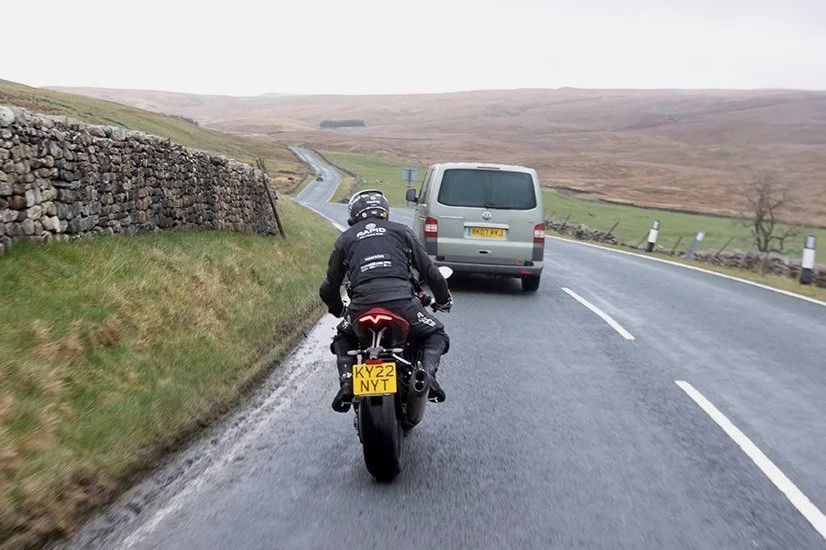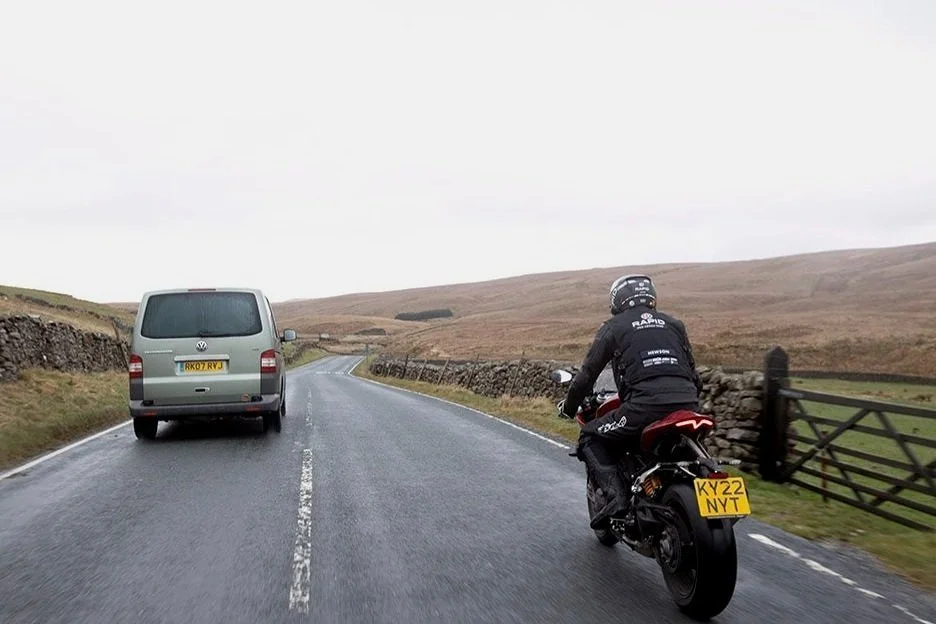PLANNING FOR OVERTAKES
After a look at planning in general terms, plus a more specific look at planning for corners, we’re going to continue exploring how to plan, this time with a focus on overtakes.
Gathering information takes on a new level of complexity when overtaking; you must take into account factors such as the driver of the vehicle being overtaken changing speed or direction, vehicles behind you planning to overtake, and vehicles emerging from side roads and laybys that aren’t expecting to see a motorcycle on the ‘wrong’ side of the road. Plus closing speeds with opposing traffic could be 120mph or more.
Gather information early is key to planning your overtake.
As always, your goal is to gather as much information as you can, as early as you can. In an ideal world you would plan to arrive at an overtake at the exact moment the opportunity opens up. This may involve using your sense of acceleration to adjust the closing speed on the vehicle in front of you so that you arrive at just at the right moment to maintain momentum and slide effortlessly past (a momentum overtake). The alternative is you are already behind the vehicle in front and are waiting for an opportunity to overtake (a staged overtake).
These require a different approach.
Momentum overtake
This approach involves timing your approach to maintain momentum and speed as you catch and pass the vehicle in front. This requires us to see the vehicle early, assess its speed, and look way beyond to assess hazards.
As you approach you adjust your position to achieve a maximum view of the road beyond and use throttle control to time your approach.
Give yourself maximum clearance to complete the overtake.
Having ensured the road ahead is clear, you move smoothly out to the offside lane to optimise your view and give maximum clearance from the vehicle in front, and you complete the overtake.
There are also occasions when you move out way in advance of arriving at the to-be-overtaken vehicle to extend your view.
Staged overtake
If you are already in a holding pattern and following traffic in front, the technique is different and there are several stages you must work through.
At the start of the manoeuvre your goal is to position the bike so you can collect as much information as possible about the road ahead and identify the first safe opportunity to pass. Many riders miss opportunities as they are positioned too close to the vehicle in front of them and they can’t get a good view. It also forces you to match their speed. However, it is safer to hang back, maximise the view, have more flexibility over speed, and allows you to maintain a better safety margin.


